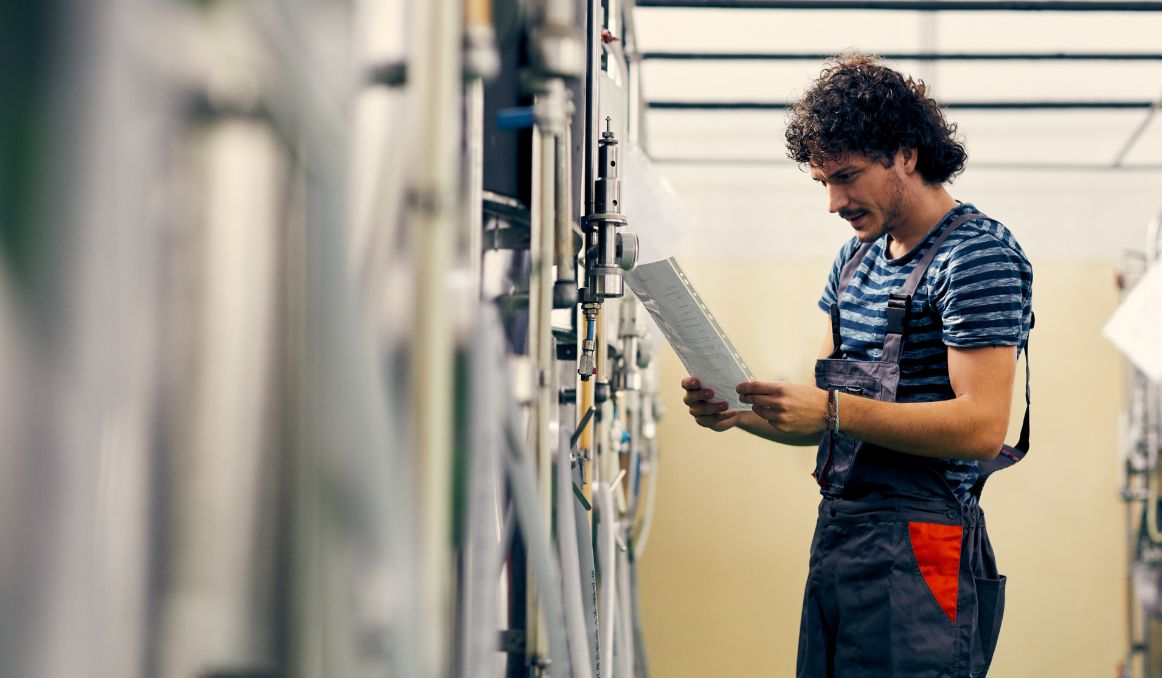Technological Factors Affecting the Beer Industry
Long have we looked at technological factors affecting the beer industry.
Truly, since the beginning of beer, beer has gone hand in hand with technology.
Think about it. Domestication and agriculture are a result of technological advances, and they are the only reason we even have beer.
Without humans deciding we can settle down, irrigate for water, and grow our own plants, we would never have harvested grain, and some busy woman would never have left her grain out in the rain to get soaked and covered, which then allowed for fermentation and our most beloved very first beer.
So it is no wonder that we humans, and beer lovers, long to stay connected to what is happening in technology so we can understand how that may affect current and future beer developments.

Beer and Technology: A Brief History
Aside from domestication and agriculture, several other technological advances have played a role in the evolution of beer.
At first, after those initial advances, changes in beer were more intuitive and less related to technology.
Brewers discovered that the grain would yield a higher alcohol content with more sugar, so they learned to roast, kiln, or malt the grain first.
Then, they figured out that cracking the grain would expose those newly converted sugars to the water in which it was boiled.
Of course, brewers also learned their customers did not want such a sweet beverage, so they introduced herbs to the wort, first a mixture called gruit, which consisted of plants like bog myrtle and yarrow, and later they adopted, after much resistance, the single plant that would come to be associated with beer forever more – hops.
Finally, thousands of years into brewing and crafting the art of beer, some monks in Bavaria stored their fermenting brew in some cooler caves in the mountains, only to find they had tapped into an entirely different strain of yeast that fermented lager rather than the ale everyone had come to know and love.
Those changes were small, subtle, and took place over great periods of time.
None of this is to mention the fact that each region had its own native grains, yeasts, and bacteria that shaped the flavors and aromas of their beers.
The Bavarians had their lagers, the Germans had their sour beers and their wheat beers, and the Irish had their oat stouts.
Modern Technology and Beer
Of course, everything shifted between the 1500s and the 1800s.
Suddenly, the scientific revolution took hold at the same time that the age of exploration was rising.
Ships took off from Europe bound for far off places like India, China, Africa, and eventually the new world in the western hemisphere.
And of course, they wanted to take their beer!
Breweries began bottling beer for shipping, using technology that called for the beer to be much hoppier than usual, typically meant to age like wine, but showing up much milder and smoother by the end of a 6-month journey from England to India. This super hoppy beer was the first India Pale Ale.
Shortly after that, Louis Pasteur, the French Scientists, discovered the role of yeast in the brewing process, and the fermenting fungus quickly became captured, commercialized, mass produced, and sold to brewers around the world.
This commercialization of yeast of course allowed for mass production of beer, which demanded several technological advances.
The saccharometer measures gravity in beer, which allows brewers to tell just how much alcohol content their beer has.
The drum malt roaster offered an advanced roasting method for brewers to cut down on time and energy and save money.
And the automated bottling system allowed for assembly line style bottling.
Finally, refrigerated railcars made it possible for brewers to ship their beloved beverages across continents.
It would be another hundred years, well into the 1900s, before the next technological changes came to brewing, which included the beer can.
Current Technological Changes Affecting the Beer Industry

Today, technology changes rapidly and pretty much any advances made are immediately applied to the full range of industry.
Machine learning and artificial intelligence are the biggest factors in beer today, and we see them play out in several ways.
Big Data
Big data is likely the most critical piece of technology affecting beer today as it is the root cause of virtually all other changes.
It is the information system that takes in consumer information at mass levels and reports back to brewers and others in the brewing industry.
Big data reports on the full range of topics like consumer preferences and purchases that provide valuable insight to brewers as to the needs of their demographic.
It has led to the creations of such things as FliteBrite, a serving system that allows restaurants develop menus and metrics based on real time customer preferences.
We have also seen the growth of self-serving taps in bars and restaurants that allow customers to serve their own beer, which cuts down on wait times and staffing needs.
Furthermore, the issue of sustainability has risen to the forefront of brewing, as with many industries, and technology like Wonderware manufacturing execution system is helping to meet sustainability needs by automatically tracking and recording the entire production bottling process, which then reports back to the brewer where inefficiencies can be engaged with and altered as needed.
Modern tech has also brought brewers better ways to engage with their ingredients and processes, like microscopes and yeast cell counters as well as the means to crop and harvest our own yeast for future exploration and experimentation.
In the end, modern technology will only continue to help educate and inform brewers of issues in their supply chains, of consumer interest and demand, and of production and shipping concerns.
In a rapidly changing world, we can only be grateful for every new technological revelation that allows us to both engage with our materials and better understand our consumers so we can continue to thrive in our market.
Cheers!
Are you still pitching fresh yeast every time? By reusing your yeast, you can save up to hundreds of thousands of dollars per year on just yeast alone!
Join the hundreds of brewers from all around the world using the Smartest Automated Yeast Cell Counter! Request a Free Demo Account today and experience firsthand how Oculyze can take your brewery to the next level!
Sources:
1. https://www.provi.com/blog/operations/innovative-craft-beer-technology
Stay on top on important fermentation insights – subscribe to our monthly newsletter and receive a hand-picked selection of our most relevant articles straight to your inbox.
Never miss a beat and get real time updates with a new article each workday by subscribing our social media channels.
Instagram | Facebook | Twitter | YouTube


